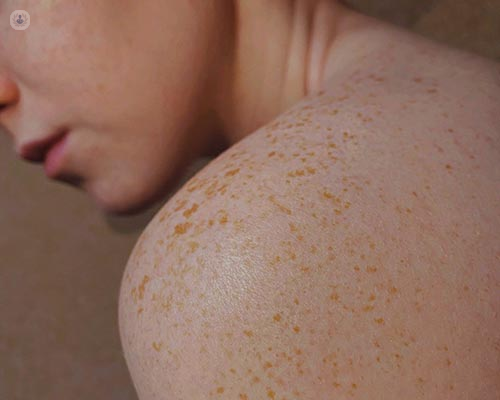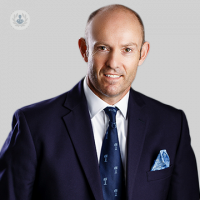An expert's guide to shoulder arthritis: part 1
Autore:In the first article of a two-part series, experienced consultant orthopaedic surgeon Mr Graham Tytherleigh-Strong delves into shoulder osteoarthritis, including an explanation of symptoms and diagnosis.

What is shoulder arthritis?
Shoulder osteoarthritis is a progressive degenerative condition marked by the gradual "wear and tear" of the joint. The presence of healthy articular cartilage is crucial for facilitating smooth movement between joint surfaces and effectively distributing loads. However, in the degenerative process, the specialised 'articular' cartilage that covers both sides of the shoulder joint undergoes a progressive thinning, ultimately wearing away.
Consequently, joint movement becomes increasingly difficult, giving rise to stiffness and pain. As time progresses, the adjacent bones undergo remodelling, deviating from their normal state. Despite being less common than arthritis in the hips and knees, shoulder osteoarthritis can significantly impact a patient's quality of life, presenting a substantial challenge.
What are the symptoms of shoulder arthritis?
Shoulder arthritis manifests primarily through symptoms of pain and stiffness accompanied by restricted movement. The pain tends to intensify throughout the day and exacerbate with physical activity.
Patients often report experiencing an intermittent catching sensation and a noticeable 'creaking' noise while moving their shoulder. These symptoms collectively contribute to the challenges faced by individuals dealing with shoulder arthritis, impacting their daily activities and overall comfort.
Do these symptoms always mean shoulder arthritis?
Several other common shoulder conditions share symptoms similar to shoulder arthritis. Frozen shoulder, for instance, is characterised by severe pain and a rapid progression of movement restriction in all directions, differing from the slower progression typically seen in shoulder arthritis.
Additionally, a massive rotator cuff tear may present with pain and restricted movement. In specific cases, such a tear can result in a unique form of shoulder arthritis known as rotator cuff arthropathy. Exploring these possibilities is essential for accurate diagnosis and appropriate management.
How is shoulder arthritis diagnosed?
For diagnosing shoulder arthritis, a comprehensive evaluation often begins with an X-ray, typically including an AP and axillary view. This imaging method reveals characteristic findings such as joint space narrowing between the humeral head and glenoid, bone sclerosis indicated by increased whiteness, osteophytes at the joint edges, and cysts represented by small, dark, spherical spots on the X-ray.
Additional insights into bony changes and concerns about bone loss can be gained through a CT Scan, providing a 3-D view of the shoulder bones. This proves particularly valuable in the planning of a shoulder replacement. While shoulder arthritis primarily impacts bones, concerns about associated rotator cuff problems may prompt the need for an ultrasound (USS) or MRI scan. These investigations contribute to a comprehensive understanding of the shoulder condition, guiding accurate diagnosis and appropriate treatment decisions.
What examinations are available?
Examination of a patient with shoulder arthritis typically reveals no visible swelling or inflammation. Pain may be elicited upon deep palpation of the front and back joint lines. Movement restrictions, especially in external and internal rotation and forward elevation, are commonly observed when compared to a normal shoulder. Despite the presence of a mechanical block at the end of the movement, patients usually retain normal power. A distinct 'crepitus,' described as a crunching or grinding sensation, may be felt during joint movement. It's noteworthy that individuals with shoulder arthritis may also have an element of concomitant rotator cuff disease, requiring an assessment of rotator cuff function.
In terms of investigations, a plain x-ray, including AP and axillary views, is usually enough to diagnose shoulder arthritis. Characteristic findings include joint space narrowing between the humeral head and glenoid, bone sclerosis, indicative of thickening at the joint surfaces, the presence of osteophytes (extra bits of bone at the joint edges), and cysts (small fluid-filled cavities around the joint surfaces).
If marked bony changes or concerns about bone loss arise, a CT Scan, providing a 3-D view of the shoulder bones, can be beneficial, especially in the planning of shoulder replacement. While shoulder arthritis primarily affects bones, an ultrasound (USS) or MRI scan may be necessary if there are suspicions of associated rotator cuff problems. These imaging modalities help ensure a comprehensive understanding of the shoulder condition and guide appropriate treatment strategies.
If you are suffering from shoulder arthritis and would like to book a consultation with Mr Tytherleigh-Strong, do not hesitate to do so by visiting his Top Doctors profile today


